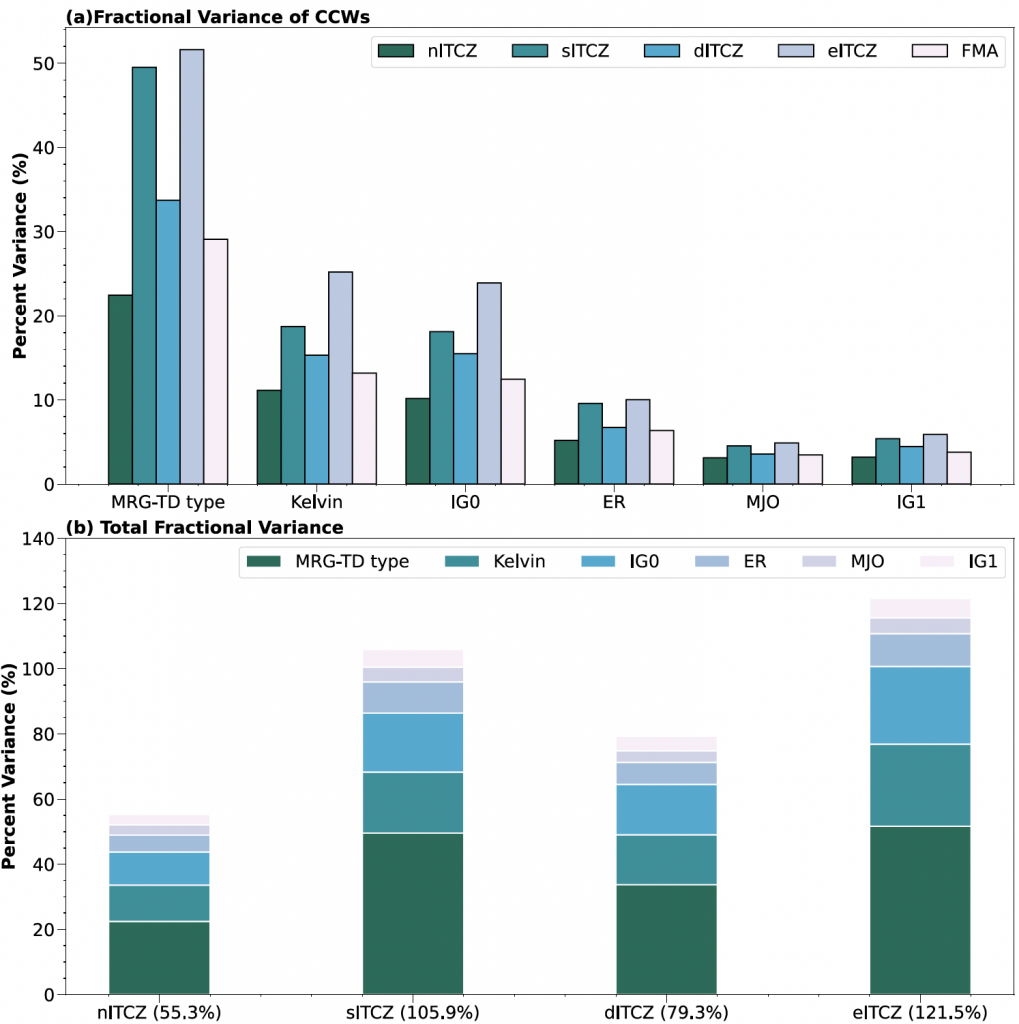Fouzia and Alex publish their ITCZ and convectively coupled waves research in the Journal of Climate
On March 22, Fouzia, Alex, and co-authors (Justin Stachnik and Brett Chrisler) published a paper entitled, “The Relationship between Convectively Coupled Waves and the East Pacific ITCZ” in the Journal of Climate: https://journals.ametsoc.org/view/journals/clim/37/8/JCLI-D-23-0398.1.xml. Congrats to all involved!

(a) Averaged percent variance of each ITCZ state explained by wave-filtered February, March, and April (FMA) precipitation variance from the following convectively coupled wave (CCW) bands: Mixed Rossby-gravity waves and tropical depressions (MRG–TD type), Kelvin waves, n=0 inertia-gravity waves (IG0), equatorial Rossby waves (ER), Madden-Julian Oscillation (MJO), and n=1 inertia-gravity waves (IG1). The fifth bar is for the averaged percent variance of total precipitation explained by each wave type. (b) Total variance of wave-filtered precipitation expressed as a fraction of the ITCZ-state variance for all CCW bands. The variance has been calculated from 2001 through 2021 and averaged within 10°N–10°S, 75°–135°W. We withhold aITCZ variances since there is less precipitation activity associated with this state.
Significance Statement
Convectively coupled atmospheric waves (CCWs) are a critical feature of tropical weather and are an important source of precipitation near the region of highest precipitation on Earth called the intertropical convergence zone (ITCZ). Given three decades of climate model biases in CCWs and ITCZ precipitation over the east Pacific (EP) Ocean during spring, few studies have examined the relationship between CCWs and the springtime EP ITCZ. We explored the CCWs and EP ITCZ relationship through calculations of the percent of precipitation that comes from CCWs. A significant portion of the tropical precipitation is associated with CCWs during spring. CCWs are even more impactful when the ITCZ is in the SH or on the equator, which are both problematic in climate models.